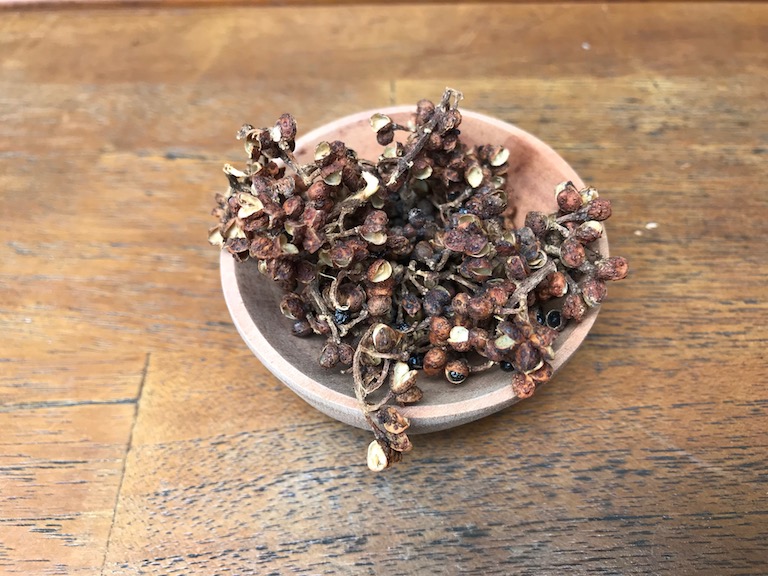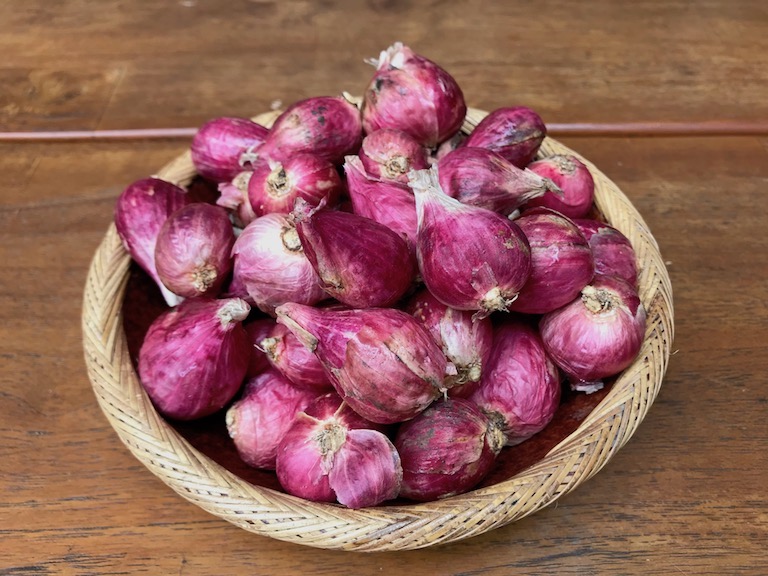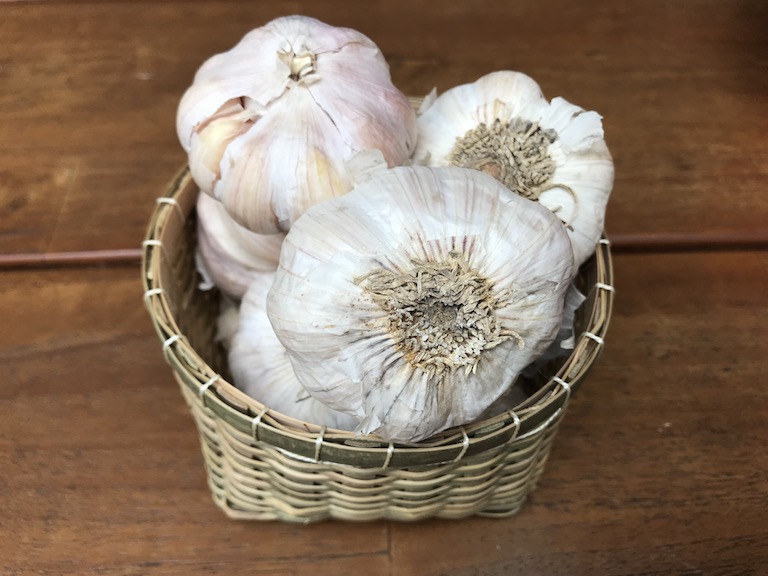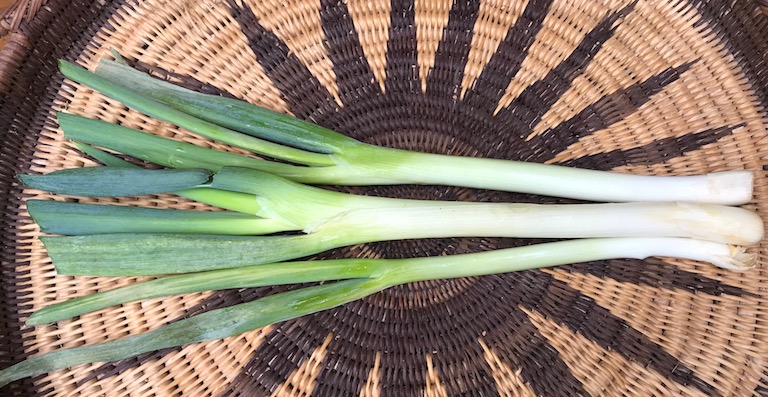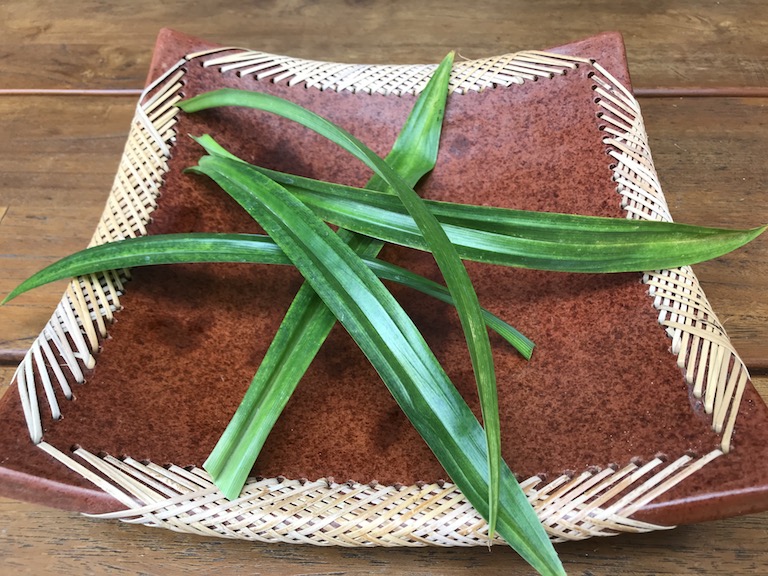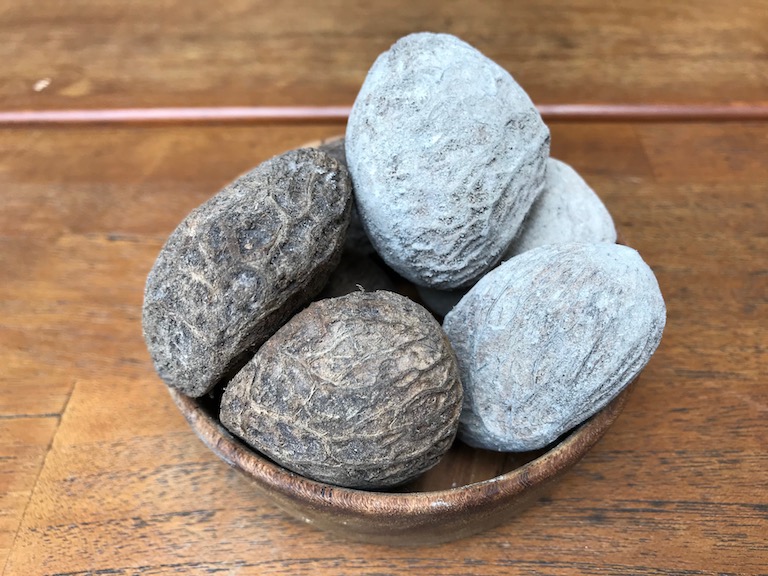AJB's Guide to Essential Herbs and Spices for your Indonesian Kitchen
Welcome back to a journey bespoke and Happy New Year to You!
Thanks for joining us in what is now our fifth year of blogging. Liz and I have returned from holidays and are feeling excited about getting busy again in the ajb Kitchen. We are eager to try our hand at new recipes as well as return to some old favourites. We’re also keen to broaden our knowledge of indigenous produce and introduce new dishes to our families.
Today we present you with our guide to Essential Herbs and Spices for your Indonesian Kitchen. Through trialling recipes, along with hours spent exploring the produce at local pasars (markets) throughout Jakarta and beyond, we feel the following ingredients are essential in the many traditional dishes (khas makanan) from across the archipelago.
I encourage you to take time to peruse the following list but note, it’s not exhaustive, which is why I’m asking for your help :) !
Please let us know what Herbs and Spices we are missing. We are always delighted when you share your knowledge with us as together we can build a more thorough understanding, and celebrate the exciting cultural dishes of the Indonesian archipelago.
Happy reading and even happier cooking!
Best wishes
Jo.
(Note: Although the majority of the ingredients listed below are either a Herb or a Spice, there are some that do not fit into either category. These, which I felt still needed to be mentioned, have been listed at the end of the post).
Herbs and Spices for Your Indonesian Kitchen
Bahasa Indonesia Name: Andaliman
Andaliman
English Name: Andaliman (sometimes referred to as Indonesian Lemon Pepper)
Suggested uses in your Indonesian Kitchen: Andaliman has an intense lime fragrance and is commonly found in Batak cuisine of North Sumatra. Arsik - a typical Batak fish stew contains both andaliman and torch ginger (kecombrang) which impart both fragrance and spice.
Interesting Facts: Andaliman is a member of the Sichuan pepper family. Like sichuan pepper, andaliman causes tingling and numbing of the tongue when consumed.
Bahasa Indonesia Name: Asam Jawa
Tamarind (Asam Jawa) - Removed from its pod - left, and in its natural state - right
English Name: Tamarind
Suggested uses in your Indonesian Kitchen: Tamarind can be used fresh but is more commonly added to soups such as sayur asem as well as to drinks including Indonesia’s most famous Jamu, jamu kunit asam. Tamarind is often found in confectionary as well.
Interesting Facts: Tamarind was first introduced to Indonesia by Indian merchants and the Tamarind tree is now naturalised in Indonesia. The word, asam means sour in Bahasa Indonesia.
Bahasa Indonesia Name: Bawang Merah
Shallots (Bawang merah)
English Name: Shallots
Suggested uses in your Indonesian Kitchen: Shallots are an absolute staple in the Indonesian kitchen. Unlike European shallots which tend to be larger, Indonesian shallots are small and sweeter in flavour. Shallots are often fried and added as a crunchy topping to nasi goreng (fried rice), or included as a topping to soups. Sliced shallots can be added to curries or used in Indonesia’s famous sambal recipes.
Interesting Facts: Indonesia’s volcanic soil is the perfect environment in which to grow shallots, resulting in large annual yield. The availability of shallots means that they are added to many recipes.
Bahasa Indonesia Name: Bawang Putih
Garlic (Bawang putih)
English Name: Garlic
Suggested uses in your Indonesian Kitchen: Garlic is a ubiquitous ingredient for the many cuisines of Indonesia. It is often added raw to sambals, stir-fried with green leafy vegetables or cooked into curries or stews. Fried garlic is added as a crunchy, tasty garnish for soups.
Interesting Facts: Garlic is native to Central Asia but can now be found growing throughout the World. Local varieties of garlic tend to be smaller yet sweeter than those found growing in the Western World.
Bahasa Indonesia Name: Biji Ketumbar
Coriander seeds (Biji ketumbar)
English Name: Coriander seeds
Suggested uses in your Indonesian Kitchen: Originally brought to Indonesia by Indian traders, coriander (more specifically coriander seeds) are used for marinating and making spice blends. Coriander seeds are often a significant ingredient in the recipes for ayam bakar and sate ayam.
Interesting Facts: In general, when coriander is called for in an Indonesian recipe, it is usually referring to the seeds (biji). The leaves and stems of coriander are rarely used in Indonesian cuisine.
Bahasa Indonesia Name: Biji Lada Hitam
Black peppercorns (Biji lada hitam)
English Name: Black Peppercorns
Suggested uses in your Indonesian Kitchen: Pepper is used as a general seasoning in dishes throughout the archipelago. Pepper is also a significant ingredient in the recipe for Wedang Jahe (a spicy tea which is particularly popular when the weather turns wet and cold).
Interesting Facts: Did you know that more than 50 percent of the World’s supply of pepper comes from India and Indonesia combined? - And the greatest portion of Indonesia’s contribution is grown in/around the city of Lampung, Sumatra.
Bahasa Indonesia Name: Cabe Jawa (Cabai Jawa)
Long pepper (Cabe Jawa)
English Name: Long Pepper
Suggested uses in your Indonesian Kitchen: Add to nasi goreng and other stir-fry dishes. Long pepper can be used as a general pepper substitute, especially if you like a little more heat. The use of a mortar and pestle is perhaps most effective to reduce long pepper to powder form.
Interesting Facts: Long pepper has a taste similar to, but hotter than black, green and white peppercorns. Long pepper is the fruit of a climbing vine which can be found growing in the wild in Bali and Java. Like andaliman, long pepper has a numbing aftertaste.
Bahasa Indonesia Name: Cabe/Cabai (featured here are ‘Cabe Kriting’ - Curly Chillies)
Curly chillies (Cabe keriting)
English Name: Chilli
Suggested uses in your Indonesian Kitchen: Along with shallots and ginger, chillies are an integral ingredient in the Indonesian kitchen. They form the base for many curry pastes and feature regularly in the recipes of various sambal varieties from across the archipelago. The super spicy Northern Sulawesi dish, rica-rica contains an abundance of chopped chillies. Small whole chillies are often served with savoury snacks such as martabak telur, tahu isi and pastel.
Interesting Facts: Chillies were introduced to Indonesia by the Portuguese traders in the 15th Century.
A village in Tapin regency, South Kalimantan, is home to the hottest chilli in Indonesia.
According to the local administration and residents, chillies planted in the regency's Hiyung village have a spiciness level 17 times spicier than a regular chilli.
Bahasa Indonesia Name: Daun Bawang
Spring onions (Daun bawang)
English Name: Spring Onion
Suggested uses in your Indonesian Kitchen: Daun Bawang, which translates as ‘onion leaves’ are finely sliced and added to salads, soups as well as Indonesia’s famous (and terribly moreish) corn fritters, bakwan jagung. They are also a key ingredient in martabak telur. Many Indonesian dishes with Chinese influence include spring onion in their recipes.
Interesting Facts: Spring onions were introduced to Indonesia from China.
Bahasa Indonesia Name: Daun Jeruk Purut
Kaffir lime leaves (Daun jeruk purut) - dried leaves (left), fresh leaves (right)
English Name: Kaffir Lime leaves
Suggested uses in your Indonesian Kitchen: Kaffir lime leaves contribute to the clean, fresh taste of many soups including soto ayam. Kaffir lime leaves are often added to create a spice blend along with other herbs such as lemongrass, shallots and garlic. It is not unusual to find kaffir lime leaves used together with Indonesian bay leaves in fish and chicken dishes.
Interesting Facts: Kaffir lime leaves can be air-dried and stored in a sealed contained away from direct sunlight. They can then be chopped finely and added to recipes when required.
Bahasa Indonesia Name: Daun Pandan
Pandan leaves (Daun pandan)
English Name: Pandanus leaf
Suggested uses in your Indonesian Kitchen: Used to emphasise the sweet flavours in savoury dishes, a few pandan leaves tied in a knot is a common sight in many Indonesian kitchens. Pandan leaves are often added to flavour the rice in nasi lemak (coconut rice) as well as nasi kuning (yellow/turmeric rice). The green colour of the leaf can be extracted and used to impart colour in desserts and sweet snacks, whilst the pandan oil also releases an appealing aroma.
Interesting Facts: When rice is of a poor quality, a common practice is to add a leaf or two of pandan to the cooking pot. This masks the smell in the cooked rice.
Bahasa Indonesia Name: Daun Salam
Indonesian bay leaves (Daun salam)
English Name: Indonesian Bay leaves
Suggested uses in your Indonesian Kitchen: The recipe for Aceh’s famous Nasi Gurih includes bay leaves along with lemongrass and pandan to add flavour.
Interesting Facts: The Indonesian bay tree is a member of the laurel family. It is not commonly found outside Indonesia.
Bahasa Indonesia Name: Daun Suji
Pleomele angustifolia (Daun suji)
English Name: Pleomele angustifolia
Suggested uses in your Indonesian Kitchen: The green colour from the suji leaves is extracted and added to many Indonesian desserts and sweets. Daun suji is often used along with pandan leaves, or as a replacement of pandan extract.
Interesting Facts:Klepon - one of Indonesia’s favourite jajanan pasar (market snacks) contain the extract of daun suji, giving these delicious little treats their characteristic bright green colour. (Check out our ajb Klepon recipe here :) )
Bahasa Indonesia Name: Jahe
Ginger (Jahe)
English Name: Ginger
Suggested uses in your Indonesian Kitchen: Chillies, shallots and ginger are arguably the three most omnipresent ingredients in ‘Indonesian cuisine’. Ginger is the star ingredient in the drink, Wedang Jahe (here’s our recipe for this delicious drink!) as well as in cooked dishes and confectionery.
Interesting Facts: Occasionally you’ll see a recipe listing ‘red ginger’ as an ingredient. Sometimes difficult to source, red ginger is a very potent rhizome belonging to the ginger family, Zingiberaceae. Red ginger is particularly hot in taste and should be used sparingly.
Bahasa Indonesia Name: Kayu Manis
Cinnamon (Kayu manis)
English Name: Cinnamon
Suggested uses in your Indonesian Kitchen: Cinnamon is generally used to accentuate flavours. It is used to add a peppery-sweet taste to food and drinks, including the Betawi drink, ‘bir pletok’, a traditional drink of choice at Betawi celebrations. Made from cinnamon, mace, cloves, nutmeg and pepper, bir pletok is considered a prestigious drink, only served during important events.
Interesting Facts: Indonesia is the World’s largest producer of cinnamon. Cinnamon was first cultivated in Western Sumatra and until now, most Indonesian cinnamon comes from the island of Sumatra.
Bahasa Indonesia Name: Kemangi
Kemangi (Lemon basil)
English Name: Lemon Basil
Suggested uses in your Indonesian Kitchen: Lemon basil is often eaten raw in salads, or as a part of the raw vegetable dish, lalap. Lemon basil is also used to season curries & soups, as well as grilled and steamed dishes.
Interesting Facts: Lemon basil is a hybrid of Basil and American basil. Along with a chilli plant, if you live in Indonesia, you really should try growing kemangi as both are very useful in your Indonesian kitchen!
Bahasa Indonesia Name: Keluak
Keluak
English Name: Pangium Edule (“Football Fruit”)
Suggested uses in your Indonesian Kitchen: Keluak is the key ingredient in the soup, Rawon. This soup originated in Surabaya, East Java and has a distinctive dark colour due to the black kernel within the keluak seed. Rawon is usually served with uncooked bean sprouts and salty duck eggs. Keluak is also used in the North Sulawesi vegetable dish, pangi.
Interesting Facts: Keluak are native to Indonesia. Without treatment (ie, fermentation), keluak seeds are poisonous and must not be eaten unless processed.
Bahasa Indonesia Name: Kemiri
Candlenuts (Kemiri)
English Name: Candlenuts
Suggested uses in your Indonesian Kitchen: Candlenuts are a round cream-coloured nut with a very high oil content. They are used for thickening sauces and curries. If you are unable to find candlenuts, you can use macadamia nuts or raw cashews as a substitute.
Interesting Facts: When raw, kemiri are mildly toxic, so do NOT eat them unless cooked first.
Bahasa Indonesia Name: Kunyit
Turmeric (Kunyit)
English Name: Turmeric
Suggested uses in your Indonesian Kitchen: Turmeric gives Gulai (curry sauce) its distinctive yellow colour. It is also a key ingredient in the health tonic, Jamu kunyit asam. Turmeric is also responsible for the yellow hue of nasi kuning (yellow rice). Usually eaten during a special event, nasi kuning is made by cooking rice with coconut milk and turmeric.
Interesting Facts: Turmeric is a member of the Ginger family. It is native to India and Southeast Asia. Turmeric stains very easily. To remove the yellow from your hands, scrub with a mixture of baking powder and lemon juice. Afterwards massage a few drops of coconut oil and gently wipe off residue.
Bahasa Indonesia Name: Salam Koja (Daun Kari)
Curry leaves (Salam koja)
English Name: Curry leaf
Suggested uses in your Indonesian Kitchen: Gulai and spiced fried chicken.
Interesting Facts: Salam Koja is a type of aromatic ingredient widely used in both Betawi and Aceh recipes. In Aceh, curry leaves are the main element in the recipe for Ayam Tangkap (spiced fried chicken).
Bahasa Indonesia Name: Seledri
English Name: Leaf celery (Chinese celery)
Suggested uses in your Indonesian Kitchen: Used like continental parsley, the savoury leaves of Indonesian celery are often added to stews, soups and other slow-cooking dishes.
Interesting facts: Unlike the western variety of celery, Indonesian celery has slender stems and pungent leaves. Often referred to as ‘Chinese celery’, Indonesian celery is used as a herb rather than a vegetable.
Bahasa Indonesia Name: Sereh (Serai)
Lemongrass (Sereh)
English Name: Lemongrass
Suggested uses in your Indonesian Kitchen: Unlike other cuisines of Southeast Asia which use finely chopped lemongrass in cooking, in the Indonesian kitchen lemongrass is commonly tied into a knot or added as a length then simmered to infuse flavour. Once the dish is cooked, the length of lemongrass is discarded.
Lemongrass can be found in many recipes including soups like soto ayam, curries like gulai, as well as in various health tonic recipes (Jamu).
Interesting Facts: Lemongrass lengths make excellent substitutes for skewers. The Balinese sate, ‘sate lilit’ consists of spiced minced meat wrapped around lemongrass sticks. These sate are then grilled on charcoal.
A Special Mention..
Bahasa Indonesia Name: Jeruk Nipis
Key limes (Jeruk nipis)
English Name: Key Limes
Suggested uses in your Indonesian Kitchen: Squeezed into noodle soups like soto ayam and squeezed over sambals are two common uses for limes in Indonesian cuisine. The addition of lime juice also heightens the flavours in grilled chicken (ayam panggang) and sate.
Interesting Facts: Although the precise origin of limes in unknown, it is believed that wild limes were first grown in Southeast Asia, most likely Indonesia.
Bahasa Indonesia Name: Bunga Kecombrang
Torch ginger flowers (Bunga kecombrang)
English Name: Torch Ginger flower
Suggested uses in your Indonesian Kitchen: Torch Ginger flowers are normally finely sliced and used sparingly. They are most often found in Balinese and Sumatran dishes; for example as an ingredient in sambal served with grilled fish.
The recipe for Arsik (spicy fish stew) includes torch ginger flower as a special ingredient. Arsik is prepared in Northern Sumatra by the Batak people. In South Sulawesi, torch ginger is added to fish soup.
Interesting Facts: If you live in Indonesia, you should regularly get your hands on a few stems of torch ginger flower. Not only do they make beautiful ornamental flowers, when a recipe calls for it, you can grab a stem from your vase and appreciate it in your next Indonesian culinary masterpiece!
Words: Jo Stevens Photography: a journey bespoke
Looking for more reading related to today's blog post? Here are some features we know will appeal to you :)
Meet Ibu Helianti Hilman of artisanal food company – Javara Indigenous Indonesia –
Introducing Chef and Indonesian Food Ambassador Pak William Wongso
How to Make Rich and Spicy Beef Rendang
How to Make Gulai-Style Padang Chicken Curry
Two indespensible cookbooks to add to your Indonesian Kitchen



